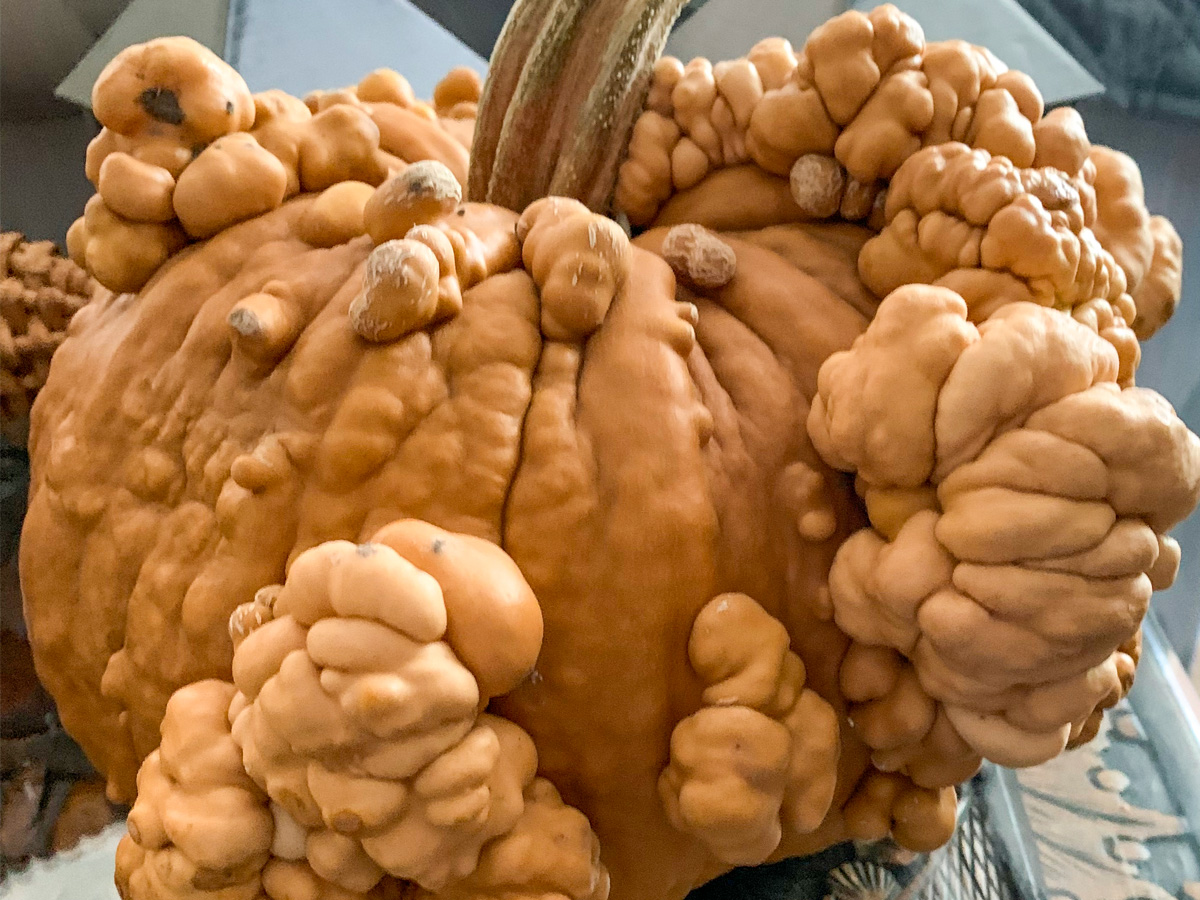Embracing the colours of fall

Photo by Deborah Maier
If we reflect back to grade school, the colours of fall were orange, gold, red, and orange, orange, orange! Bulletin boards would be covered with orange corrugated paper. Strings of orange, red, and gold leaves would be hung around the room. And, of course, there would be pictures of orange pumpkins.
Orange-coloured pumpkins are a classic icon for fall. Pumpkins are a member of the Cucurbitaceae (gourd) family and considered a winter squash.
Winter squash have a tough skin and when cured and stored properly can be kept for months, from fall well into winter. The vegetables we call pumpkins are Cucurbita maxima or Cucurbita pepo. Common names for plants that fall under the botanical name (Genus species) Cucurbita maxima include giant pumpkin, autumn squash, buttercup squash, Hubbard squash, marrow, squash, turban gourd, and winter squash.
Common names for plants that fall under the botanical name Cucurbita pepo are acorn squash, field pumpkin, marrow, ornamental gourd, patty pan squash, pumpkin, spaghetti squash, summer squash, winter squash, and zucchini. Yes, some common names are applied to plants that fall under each species.
Which is why knowing the full botanical name including the cultivar or variety is important when buying seeds.
The orange fruit that we call a pumpkin and is used for pie or carved into a jack-o-lantern is a field pumpkin. While we see this as a classic pumpkin, the original pumpkin likely had green skin that was mottled with yellow and orange.
As pumpkins were cultivated, growers selected seeds from the fruit of plants with the characteristics that were preferred, orange colouring when ripe, for example.
Pumpkins start out green. As the fruit matures and the season extends into the fall, chlorophyll in the outer layer of the skin breaks down to reveal the orange pigment in the skin. It is the same process that happens when leaves change to their fall colour.
People started growing pumpkins as crops about 4,000 years ago, in Central and South America, where they were found in the wild. From this region, people have carried seeds to growing locations around the world. Recently, there has been a resurgence in pumpkin cultivation.
Growers are creating new cultivars by saving then-growing seeds from the fruit that best represents the desired characteristic. Ensuring those plants are pollinated by each other, the grower is being genetically selective. Eventually, the grower can be confident that the seeds will yield a plant that consistently produces a fruit with the desired traits: colour, texture (bumps, warts, ribs), size, wall thickness, stem size, or flavour, to name a few.
Growing for specific characteristics is also done by crossbreeding plants. Pumpkins are monoecious—meaning they have both male and female flowers. In this case, a new plant is created by deliberately using pollen from the male flower of one cultivar to pollinate the female flower of another.
The selection process is followed, possibly with more cross-pollination, until the trait desired always occurs when the seeds are planted.
A blend of crossbreeding, plant selection, and marketing has brought us to our multi-coloured fall. “Pumpkins” in shades of soft orangy-pink, deep red-orange, dark green, “blue” (which often is more of a dusty-looking pale green), and even white in a variety of shapes, sizes, and textures are now available.
Regardless of their look, all pumpkins are edible.
Specialty pumpkins are usually a little more costly than a standard field pumpkin, so it may be worth researching the best way to cook and put it to good use.
Clean, air dry, and save some seeds in a cool dry place and next year you can try grow your own unique pumpkin. Remember that pumpkin plants need a lot of space, prefer full sun, and have regular feeding and watering. It will be unique because a pumpkin grown for the sale of its fruit, unlike a pumpkin grown for its seed, is open to many sources of pollination. You could end up with a rather unusual fruit.
Or it could be orange.
Enjoy all the colours of fall this season. To learn more about gardening in the Calgary area, visit our website calhort.org.
